Step 1
Growing Cocoa Trees
Cocoa is usually grown by smallholder farmers on farms averaging 2 to 4 hectares in size. It is found in hot and humid regions, mostly in West Africa (Côte d’Ivoire and Ghana), Latin America (Ecuador), and South East Asia (Indonesia). There are three main varieties of cocoa trees: Criollo, Trinitario, and Forastero (Amelonado).
Cocoa trees often grow under the protective shadow of plants such as banana, plantains, and palm trees. They tolerate a wide variety of soil types but are vulnerable to lack of water. Variations in the yield of cocoa trees are affected more by rainfall than by any other climatic factor. Rainfall should be plentiful and well distributed through the year, with levels between 1,500mm and 2,000mm. Dry spells, where rainfall is less than 100mm a month, should not exceed three months. Good agricultural practices, such as weeding, pruning, applying fertilizer, and pest and disease control, are needed for thriving cocoa trees. Cocoa trees can live up to 100 years but are most productive for about 25 to 30 years.
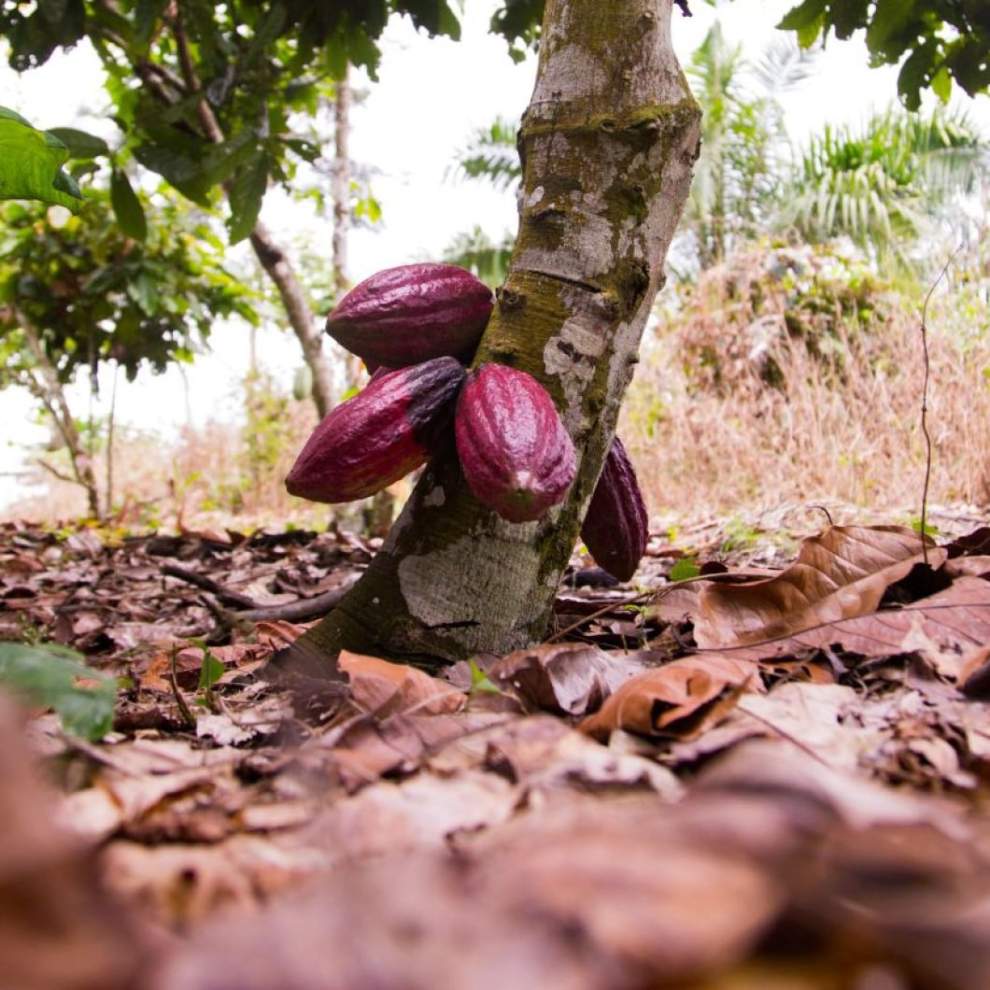
Step 2
Harvesting and Pod Breaking
Cocoa pods containing cocoa beans grow from the trunk and branches of the cocoa tree. Harvesting involves removing ripe pods from the trees and opening them to extract the wet beans. Pods are suitable for harvest for 3 to 4 weeks, after which time the beans begin to germinate. It is therefore necessary to harvest at regular intervals as the pods do not all ripen at the same time. The pods are harvested manually by making a clean cut through the stalk with a well sharpened blade.
Farmers open the pods to remove the beans within a week to 10 days after harvesting. In general, the harvested pods are grouped together and split either in or at the edge of the farm. If the pods are opened in the planting areas, the discarded husks can be distributed throughout the fields to return nutrients to the soil. The best way to open pods is to use a wooden club which, if it strikes the central area of the pod, causes it to split into two halves. It is then easy to remove the beans by hand.
Within a crop season, cocoa trees generally flower and produce pods in two cycles of six months.
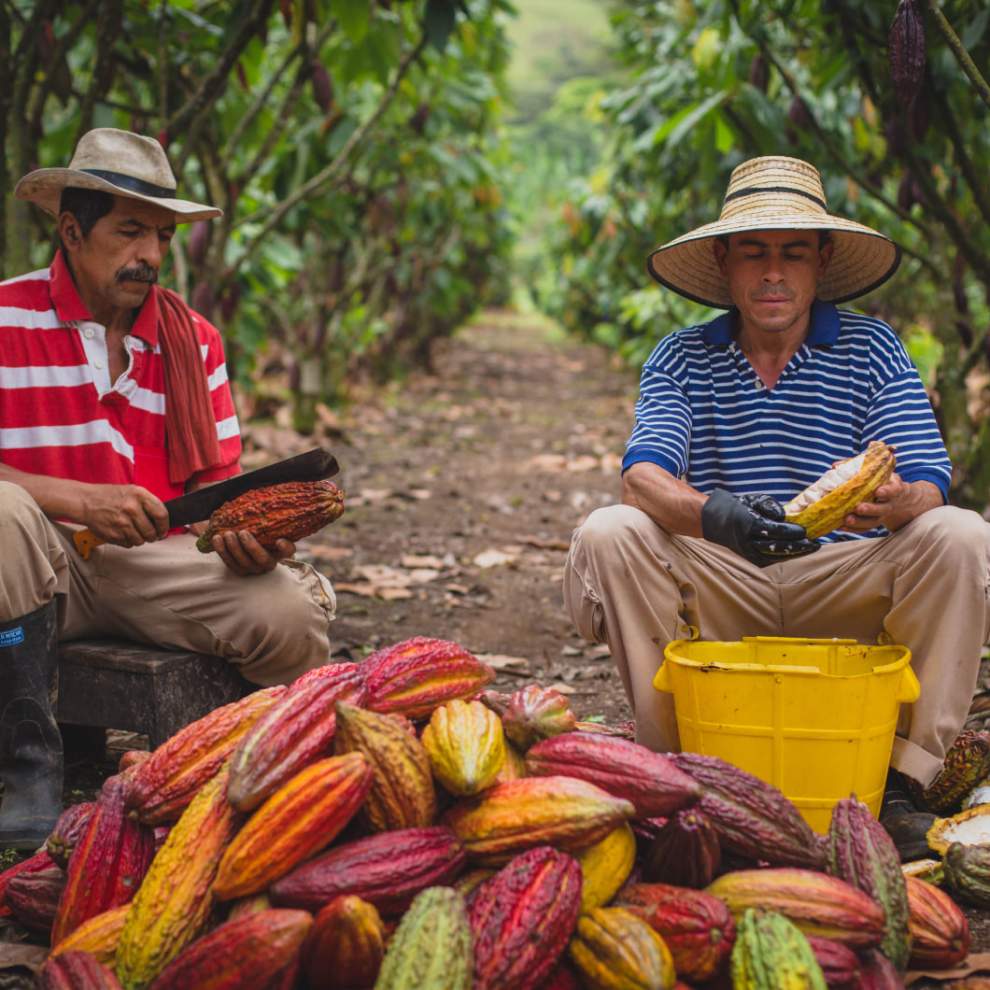
Step 3
Fermentation and Drying
Cocoa beans are normally fermented and dried on the farm or in the farmer’s village. After the cocoa pods are harvested and split, the pulp-covered beans are stored in boxes or baskets or heaped into piles and covered with mats or banana or plantain leaves. The pulp layer heats up in the sun and ferments the beans. This process, which may last three to seven days, is an essential step that enhances the flavor of the cocoa beans. Poorly fermented cocoa beans develop little cocoa flavor while over-fermented beans produce an acidic taste.
After fermentation, the beans are dried, preferably in the sun, for about five to seven days. Beans are spread out on mats, trays, or concrete floors. The drying stops the fermentation process and enhances the storability of the beans. The beans are normally turned or raked to ensure aeration and uniformity of drying. The drying rate during this process is important for the final quality of the cocoa beans. It must not be too quick in order to avoid acidic flavor. But if it is too slow, it will result in low acidity, poorer color, and a high presence of mold.
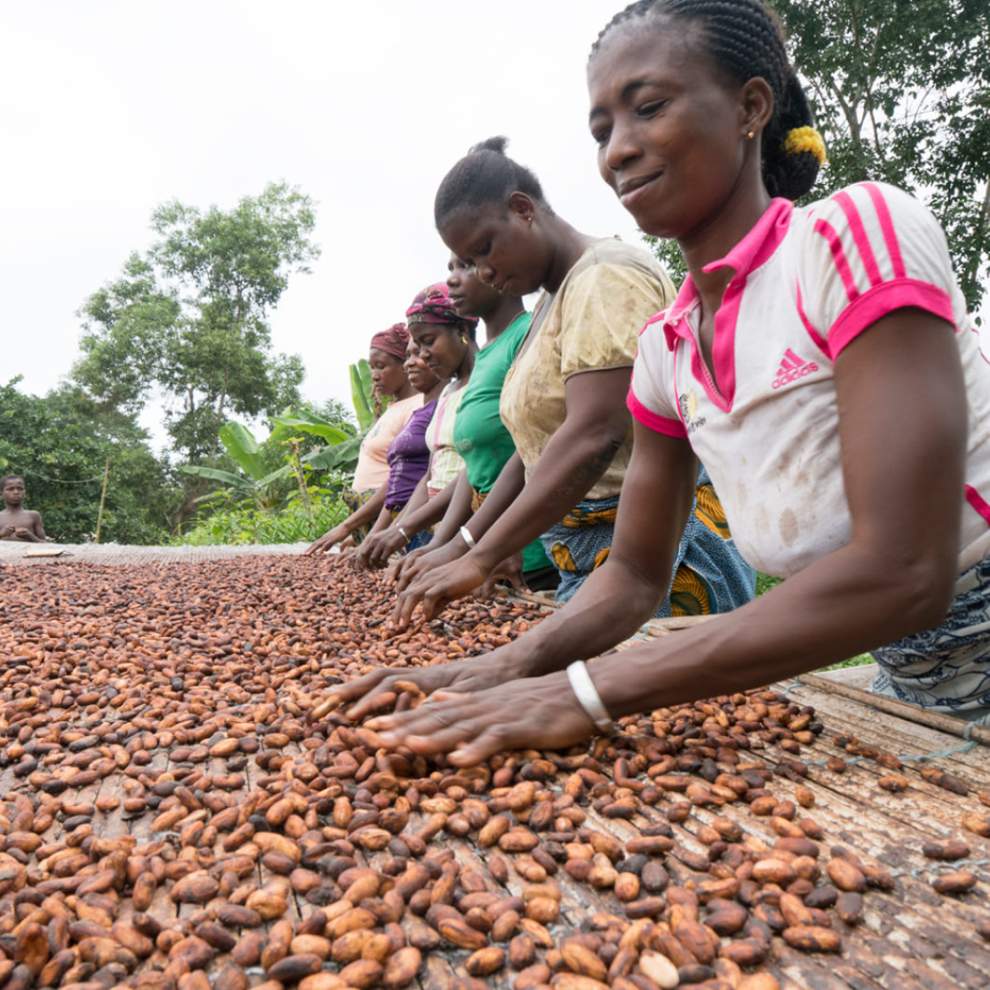
Step 4
Sourcing and Marketing
After the beans are dried, they are cleaned to remove defects. Then they are weighed and packed into jute sacks. Farmers sell the sacks of beans to an intermediary representing a buying company sourcing directly from the farmers.
Farmers then transport the bags to an exporting company. The exporting company inspects and grades the cocoa, and sends it to a warehouse near a port. Sometimes additional drying is necessary at this point.
But the structure and length of this supply chain can differ. Intermediaries such as small traders and wholesalers can play a role between cocoa farmers and exporters as described above. Sometimes, cocoa beans are sold directly to exporters by cooperatives, or even directly exported. Direct sourcing enhances traceability, proximity, trust, and efficiency in the supply chain.
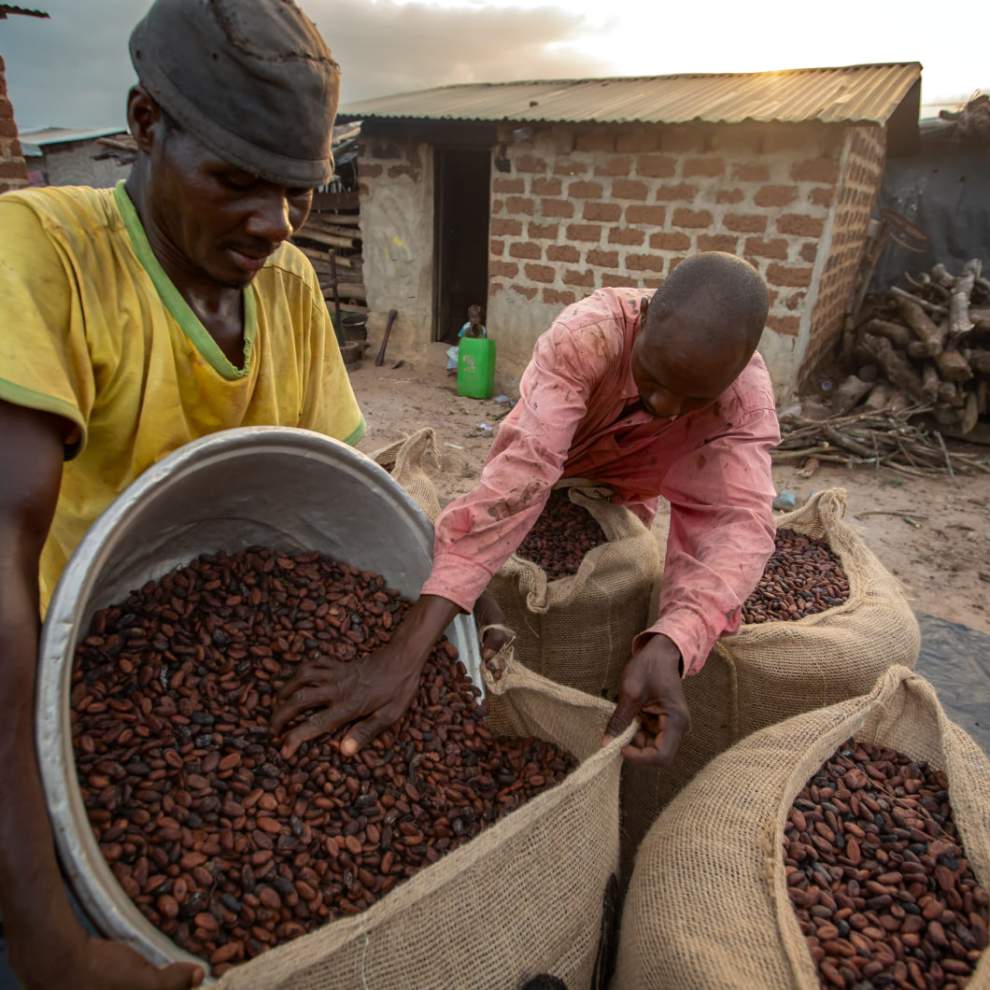
Step 5
Packing and Shipment
Once cocoa beans have been graded and loaded into cargo vessels, they are shipped either in new jute bags or in bulk. In recent years, shipment of cocoa beans in bulk has been growing in popularity because it can be up to one third cheaper than conventional shipment in jute bags. Loose cocoa beans are loaded either in shipping containers or directly into the hold of the ship, the so-called “mega-bulk” method. The latter mode is often adopted by larger cocoa processors.
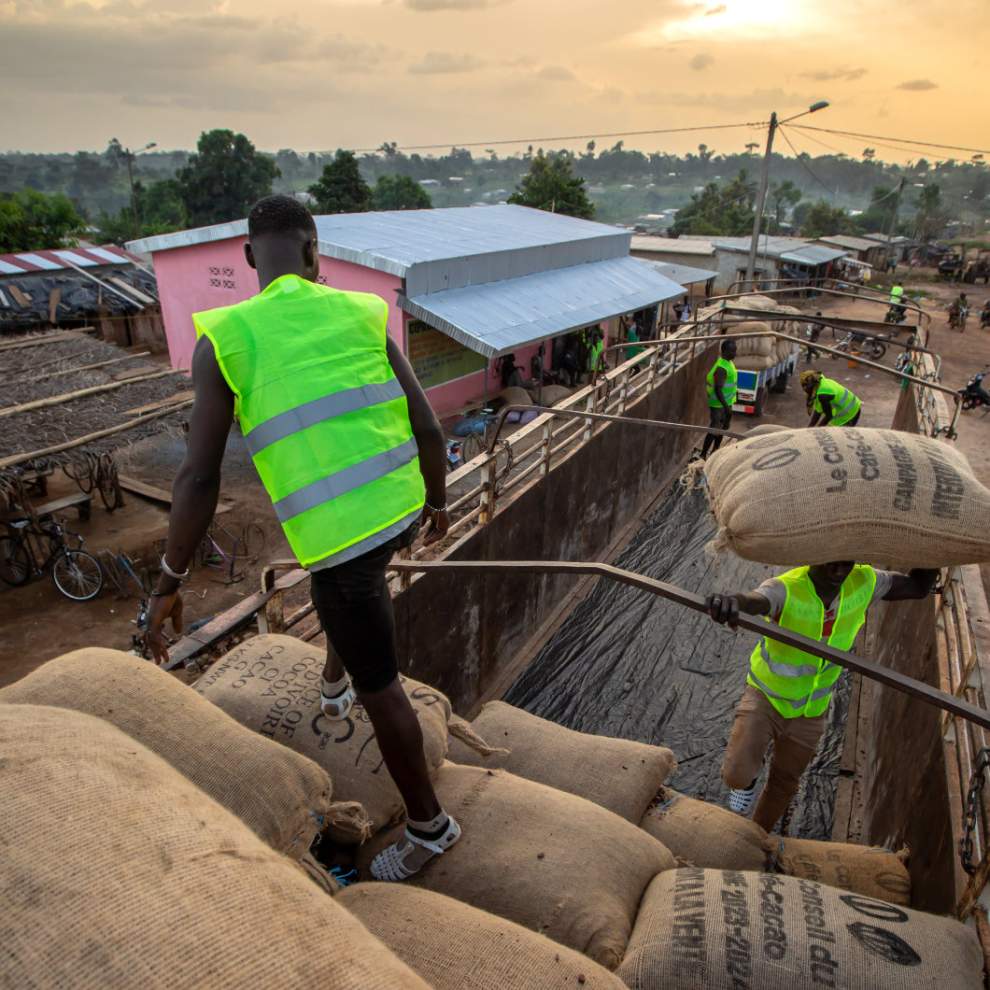
Step 6
Processing: Roasting and Grinding
The processing stage typically encompasses roasting and grinding of cocoa beans. In the past, these operations were performed almost entirely in importing countries, but, nowadays, origin countries are also increasingly engaged in processing.
Cocoa is roasted to reduce water content and to obtain rich aromas and flavor from the beans. This can be done on the whole beans before shelling (i.e. bean roasting), or on the nib after shelling (i.e. nib roasting). Sometimes, the removed shell that covers the nibs is sold and used as agricultural mulch or by fertilizer producers. After the beans are roasted, they undergo other processes, including alkalization, which makes semi-finished cocoa products darker and reduces their acidity. The time and temperature for roasting the beans are key determinants of the flavor of the semi-finished products.
After the beans have been shelled and roasted, the nibs are ground to produce fine cocoa liquor under high temperatures. The cocoa liquor may be used directly as an ingredient for chocolate. Otherwise, it is pressed through a fine sieve, leaving a solid material called cocoa cake. The extracted cocoa butter is then filtered and stored in tanks in liquid form for use in chocolate manufacturing. The cake is either broken into smaller pieces and sold in generic cocoa markets or pulverized to produce a fine cocoa powder. Cocoa cake generally varies in terms of the fat content, depending how much fat has been pressed out. This determines the end use, ranging from drinking chocolate to bakery products.
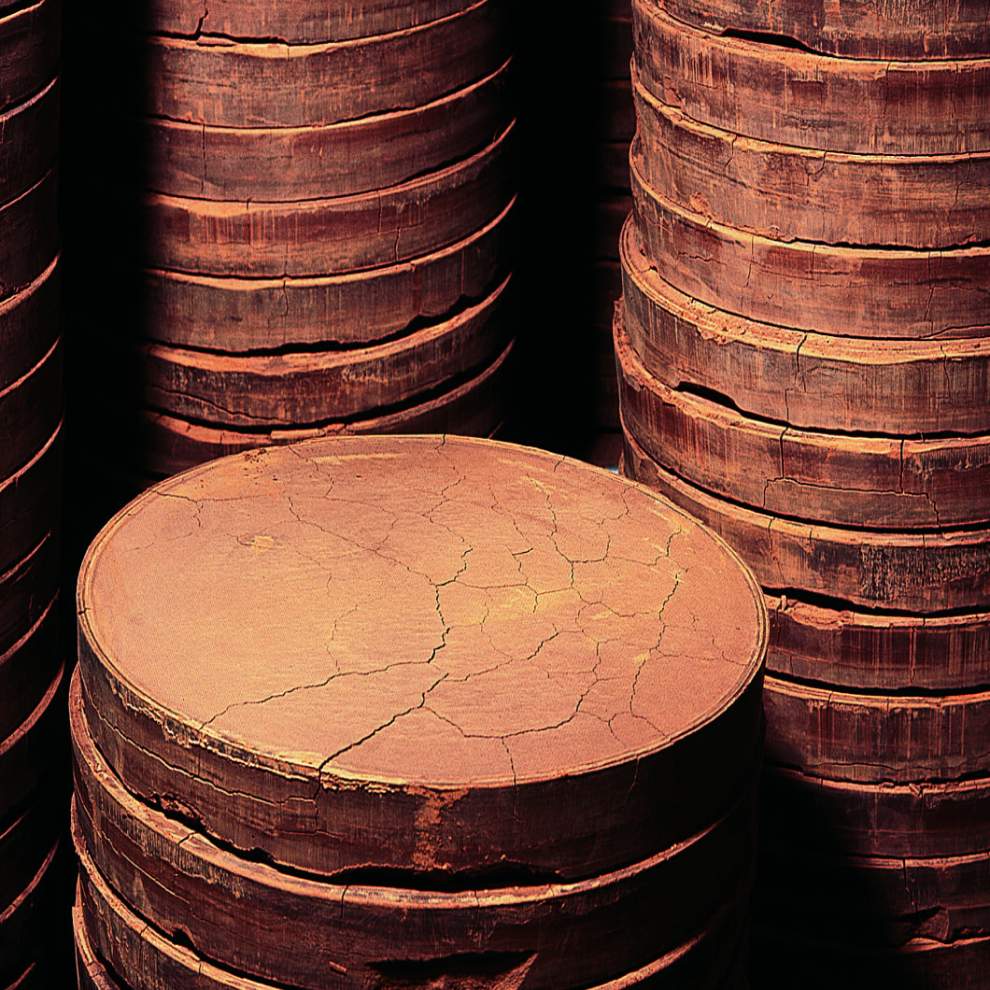
Step 7
Manufacturing and Distribution
To create chocolate, cocoa liquor and butter are mixed with inputs such as sugar, vanilla, emulsifying agents, and milk. They then undergo a refining process through a series of rollers. An additional process called conching may be performed, ranging from a few hours to several days to further develop the flavor and texture. The resulting mixture, often called “couverture”, is shipped in tanks in liquid or solid form, or it is tempered and poured into molds for use by confectioners and bakers. In some cases, ‘couverture’ chocolate is used in-house to produce consumer products.
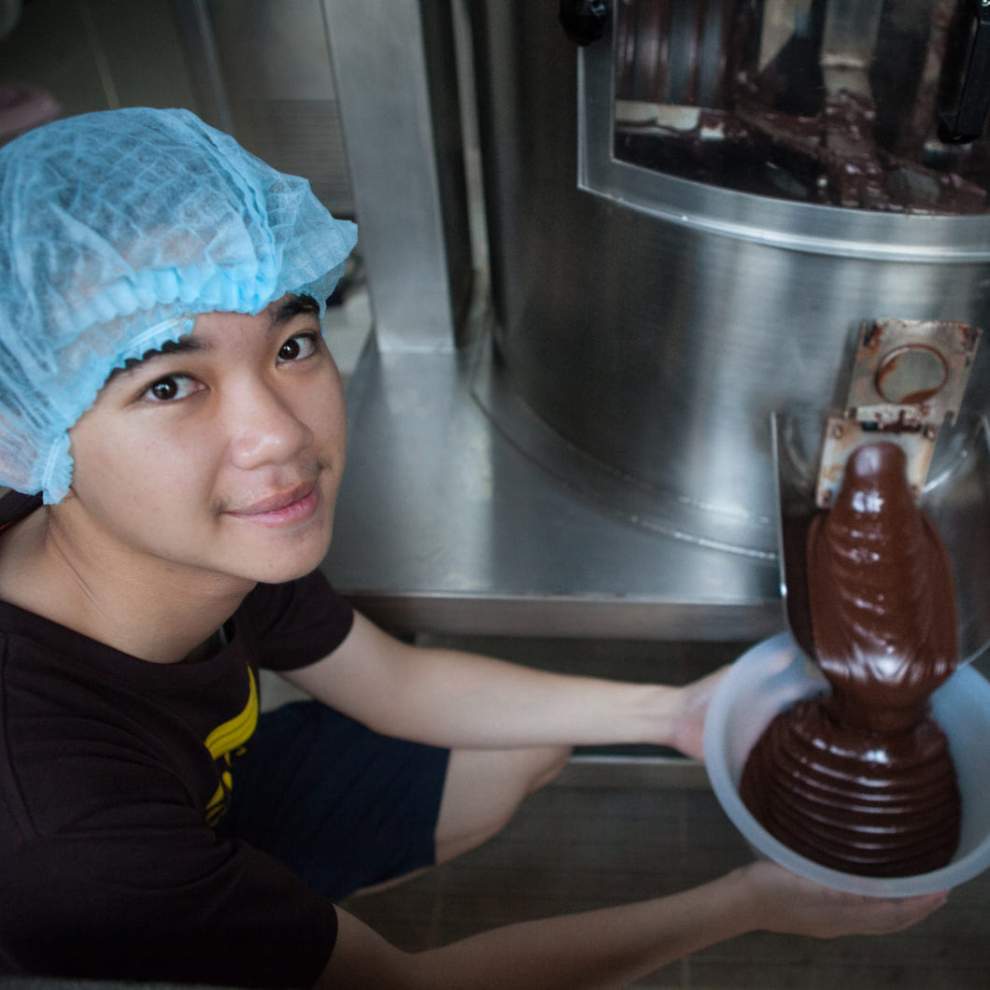
Step 8
Retail
The final step of the cocoa supply chain includes packaging, commercial marketing, and retailing. Chocolate products are sold through grocery stores wholesalers, and online. Furthermore, some chocolate manufacturers have their own branded retail stores to capture a larger consumer base. Chocolate retailing markets can be categorized by types (i.e. dark, milk, or white chocolate) or by sales categories, including every day, premium, or seasonal chocolate. Each category provides specific market opportunities.
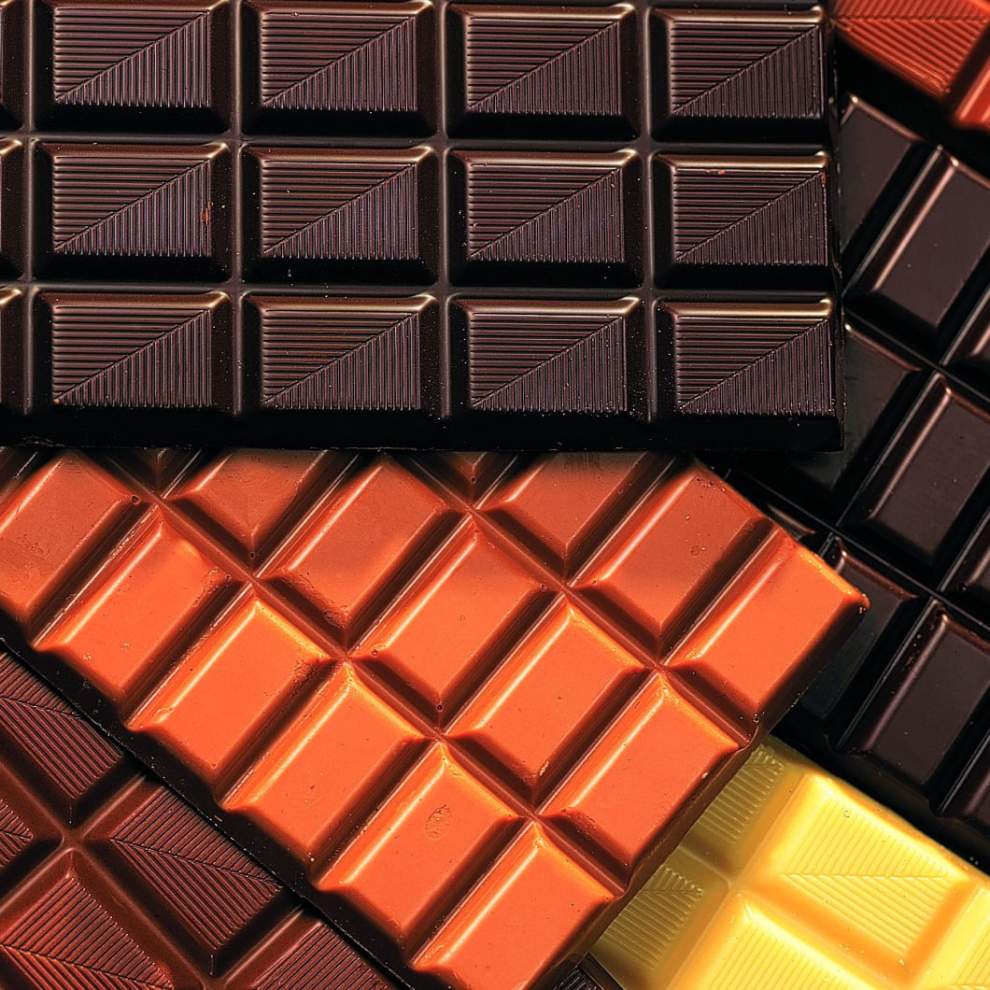
Related Resources
-
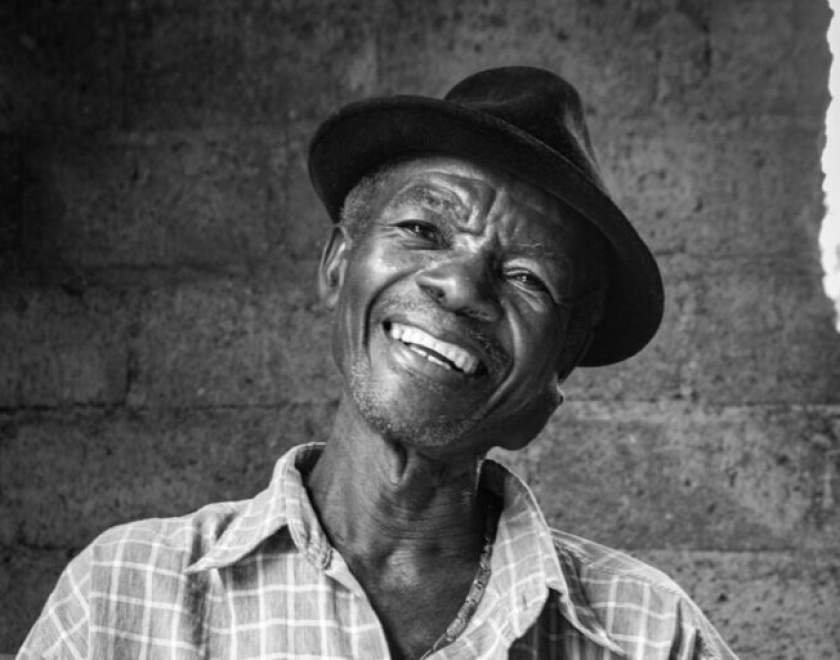
Cocoa Through the Lens: Terroir Kreyòl: Cacao in Haiti
From bean to bar
Chocolate is one of the most-loved products in the world.ArticleNovember 23, 2023 -
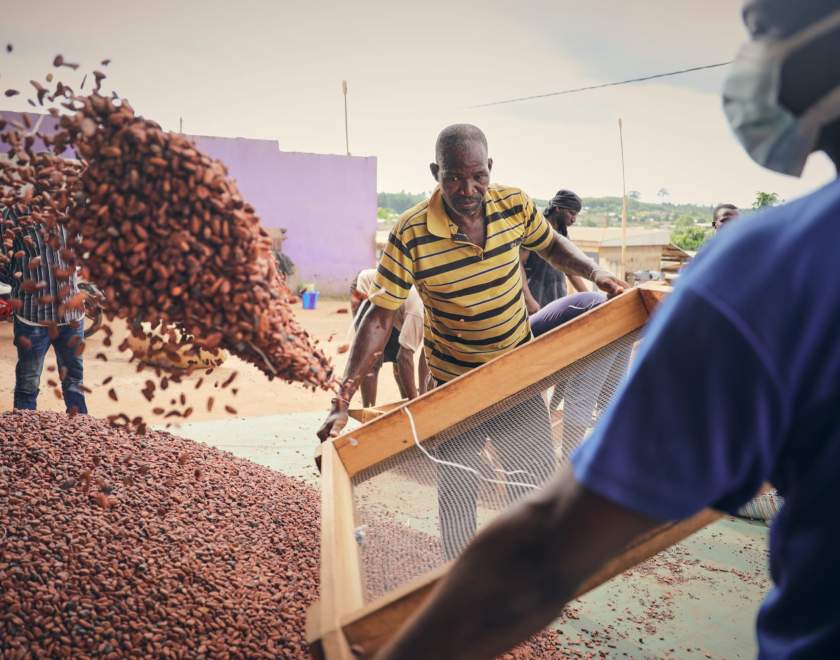
Journey of Chocolate: From Bean to Bar
From bean to bar
Explore the transformative journey of cocoa from its origin on small farms to the creation of chocolate, unveiling the steps…ArticleFebruary 23, 2023